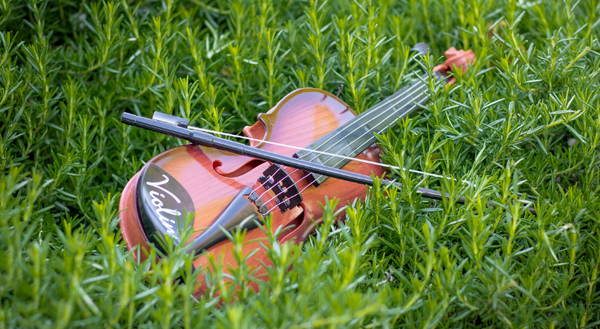
Written by Rhonda Ferree, retired horticulture educator
I love sitting in my backyard listening to the many garden sounds. Wrens sing. Frogs croak. Grasses rustle. Bees buzz. The longer I listen, the more sounds I hear.
In addition to natural sources, you can design music into the garden. Are you drowning out neighborhood noise or looking for a soothing respite? Loud sounds gently cover up unpleasant noises, while soft sounds sooth and mesmerize.
Water is the most obvious way to add sound to a garden. My garden pond has a small waterfall and a spitting alligator. Splashing fountains add charm to another area of my yard. The louder flows drown out traffic noise, while quieter trickles induce sleepiness. The farther water falls, the louder its tune.
Birdsong is present in most yards. Increase the number of songbirds in your yard using bird feeders and birdbaths. Pollinators such as bees and hummingbirds create a background buzz and are fun to watch.
I also enjoy listening to the distinctive songs of different types of frogs. Bullfrogs croak. Spring peepers sound like sleigh bells. Chorus frogs mimic fingers rubbing across a comb. Cricket frogs click like two marbles quickly coming together.
Plants add sound too as their leaves rustle in the wind. Weeping plants and grasses rustle more than large-leaved plants. Cottonwood leaves have flat leaf stems that make them quake. Seed heads, such as lotus, rattle when dry.
People make sounds too. I love to hear the crunching of leaves as I walk on them in the fall. Gravel pathways crunch beneath our feet and stone or wood paths clank.
Add specific tones and songs using wind chimes, bells, art, and other garden features. Metal adds a melodious jingle and shells click. My bamboo chime's clatter tells me how much the wind is blowing as it's clatter grows louder with stronger winds. Some chimes even play specific songs.
I've also seen musical instruments incorporated into gardens. We often see xylophones included in playground structures, but they work well elsewhere too. Other examples include drums, gongs, hand pipes, tambourines, and so much more.
I encourage you to take five minutes and listen to nature's music. Turn off the cell phone and outside music. Close your eyes and listen. You might be surprised by what you hear.
MEET THE AUTHOR
As horticulture educator, Rhonda Ferree inspired citizens in local communities to grow their own food and improve their home landscapes. She focused on high quality, impactful programs that taught homeowners how to create energy-efficient landscapes using sustainable practices that increase property values and help the environment.
After 30 years with University of Illinois Extension, Rhonda retired in 2018. She continues to share her passion for horticulture related topics as “Retro Rhonda” on social media.
ABOUT THE BLOG
ILRiverHort is a blog that helps people connect to nature and grow.